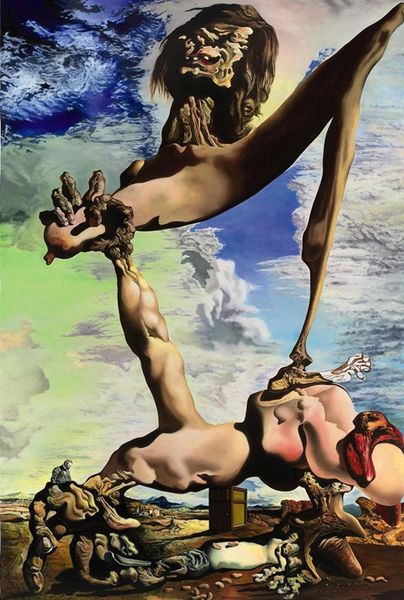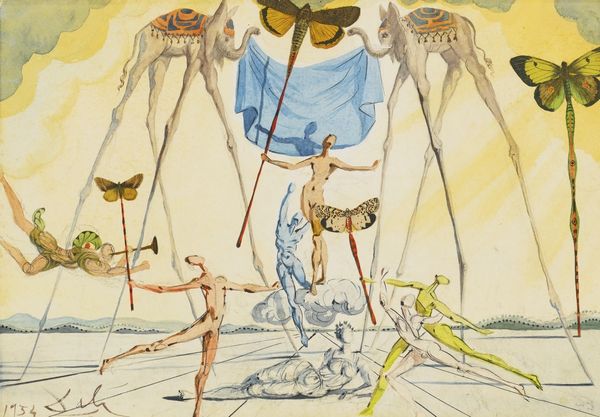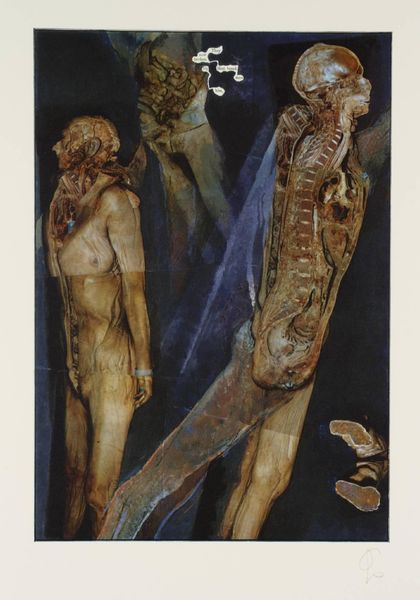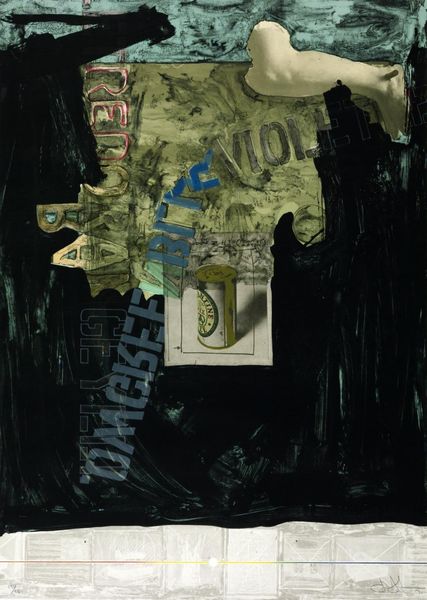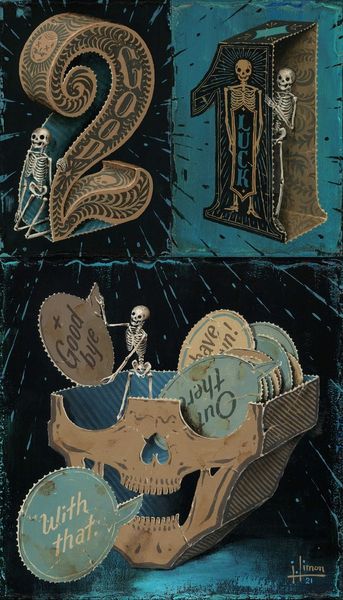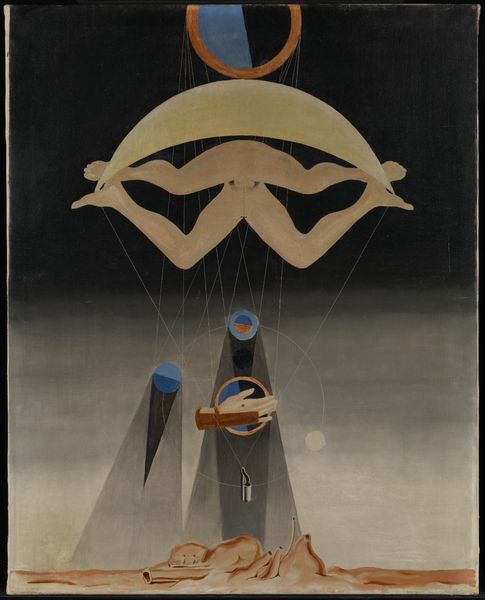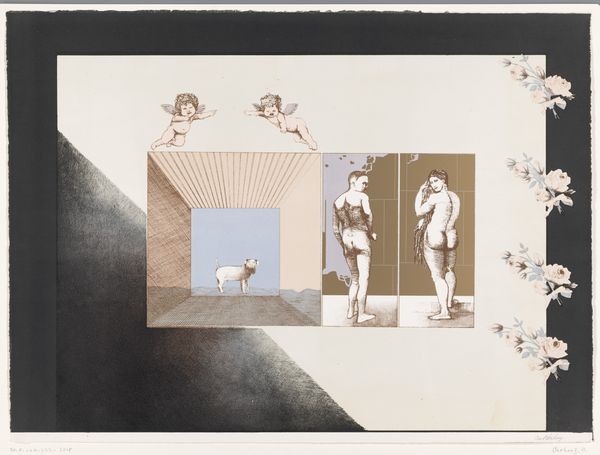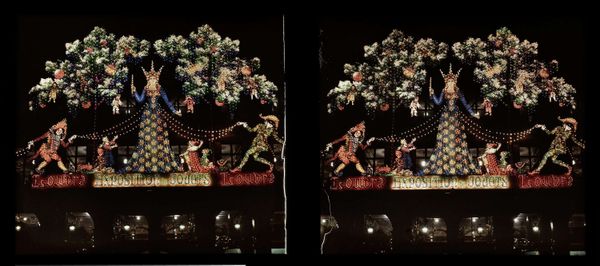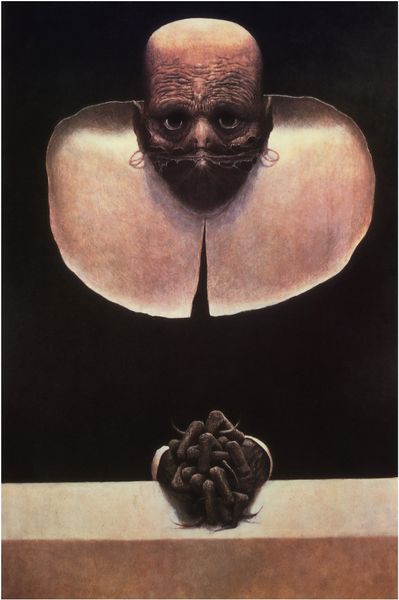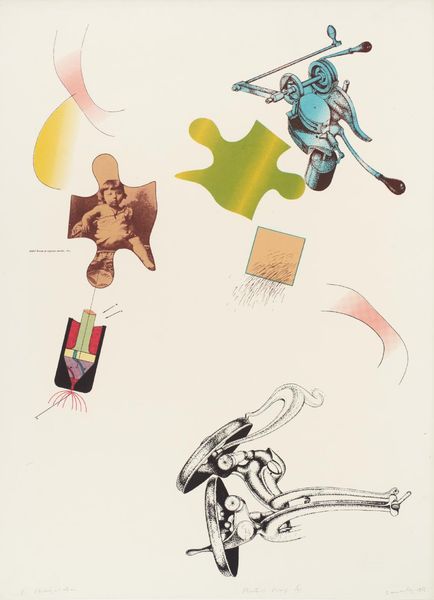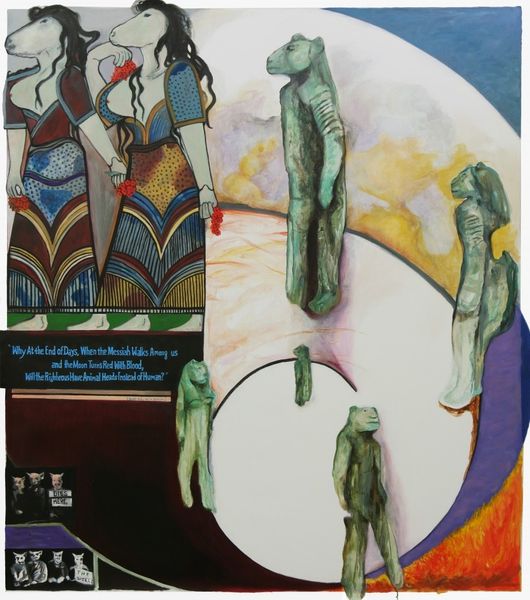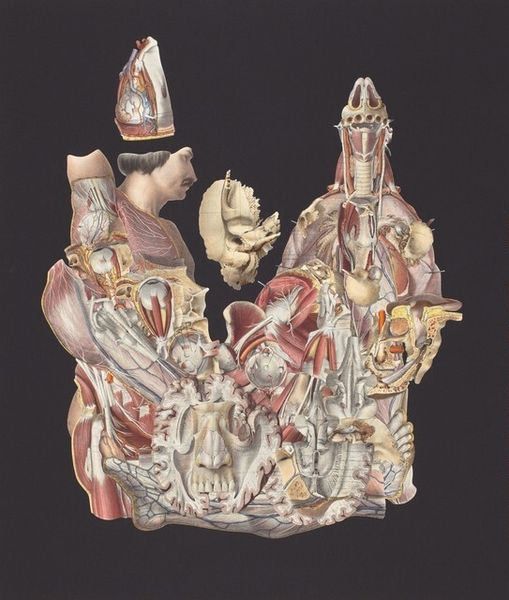
mixed-media, collage, poster
#
mixed-media
#
collage
#
figuration
#
surrealist
#
nude
#
poster
#
surrealism
Copyright: Modern Artists: Artvee
Editor: Here we have Tadanori Yokoo’s mixed-media collage "Greeting," created in 1972. The composition feels quite surreal, almost dreamlike with its juxtaposition of religious iconography and earthly elements. How do you interpret this work? Curator: This piece strikes me as a powerful commentary on cultural hybridity and the commodification of spirituality. The floating figures resembling Christ allude to Western religious influences, yet their placement within a collage featuring what looks like Japanese foot charts destabilizes any singular interpretation. Consider the context: Japan in the early '70s was experiencing rapid Westernization alongside a resurgence of interest in traditional spiritual practices. Do you think Yokoo might be addressing the tension between these forces? Editor: That’s a really interesting point. The inclusion of those foot charts now seems to point toward Eastern philosophies, juxtaposed with what looks like a Renaissance nude and other more Western symbols. So, you are seeing it as Yokoo responding to the cultural landscape of the time? Curator: Precisely. Yokoo, like many artists of his generation, was grappling with Japan's complex relationship with the West. This collage, with its disparate elements and its deliberate, almost jarring juxtapositions, embodies that struggle. The “Greeting” in the title becomes ironic; it's not a harmonious welcome, but a confrontation. How do the materials – the medium of collage – contribute to this idea? Editor: I see what you mean. Collage, by its very nature, is about bringing together different fragments, different viewpoints. So, the medium itself reinforces the message of cultural tension and hybridity. It definitely provides more depth than I initially understood! Curator: Exactly! And understanding that historical and cultural context helps unlock new meanings. It shows that art can reflect those contemporary social landscapes. Editor: This conversation has helped me realize how essential it is to consider the cultural background of the artwork to discover what it may express. Curator: Agreed! And by considering cultural contexts, we are better able to consider an artwork's resonance within our own contemporary landscapes.
Comments
No comments
Be the first to comment and join the conversation on the ultimate creative platform.
